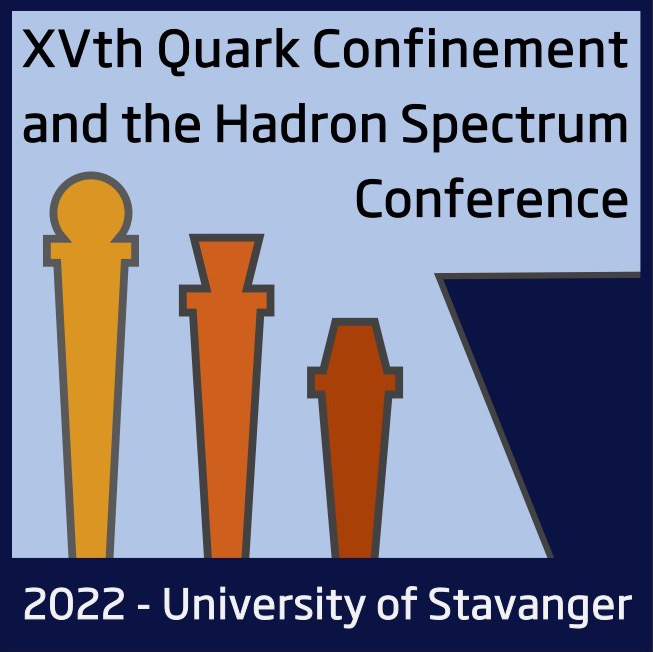Speaker
Description
We analyze [1] the next to leading order (NLO) graviton-graviton scattering amplitude via the Inverse Amplitude Method (IAM), well known to low-energy QCD practitioners [2]. Like the electroweak chiral lagrangian, successfully used for low-energy QCD, the Einstein-Hilbert (EH) lagrangian is a non-linear and non-renormalizable theory whose most relevant operator is a dimension two one containing two derivatives of the dynamical lagrangian. Both lagrangians contain a dimensionful constant in four dimensions: $f_\pi$ for the pion lagrangian and the Planck mass $M_P$ for the EH lagrangian. However, the EH lagrangian describing gravity is a gauge theory.
We use the tree-level graviton-graviton scattering amplitude given in [3] and the NLO computation done by Dunbar and Norridge [4] using string theory methods. Only counterterms proportional to $\mathcal{R}^2$, $\mathcal{R}_{\mu\nu}\mathcal{R}^{\mu\nu}$ and $\mathcal{R}_{\alpha\beta}^{\gamma\delta}\mathcal{R}_{\gamma\delta}^{\alpha\beta}$ are needed [3]. On-shell (lowest order equations of motion) these counterterms vanish, so that the theory is UV finita at NLO.
Dispersion relation via the inverse amplitude method [2,5] are used to seek for hypothetical graviton-induced resonances similar to those appearing in QCD. We focus on the $++++$ and $----$ helicity channels and analyze the $J=0$, $2$ and $4$ partial waves. We look for resonances on the second Riemann sheet as well as for artifacts in the first Riemann sheet. The study of these artifacts is necessary since their appearance can mean that the inverse amplitude method is being applied beyond its validity conditions.
[1] R.L.Delgado, A.Dobado, D.Espriu, to appear on arXiv
[2] A.Dobado, J.R.Pelaez, Phys.Rev.D{\bf 56} (1997) 3057-3073
[3] G.'t Hooft, M.Veltman, Ann.Inst.H.Poincaré A{\bf 20} (1974), 69
[4] D.C.Dunbar, P.S.Norridge, Nucl.Phys.B{\bf 433} (1995), 181-208
[5] Rafael L.Delgado, A.Dobado, F.J.Llanes-Estrada, Phys.Rev.D{\bf 91} (2015) 7, 075017

